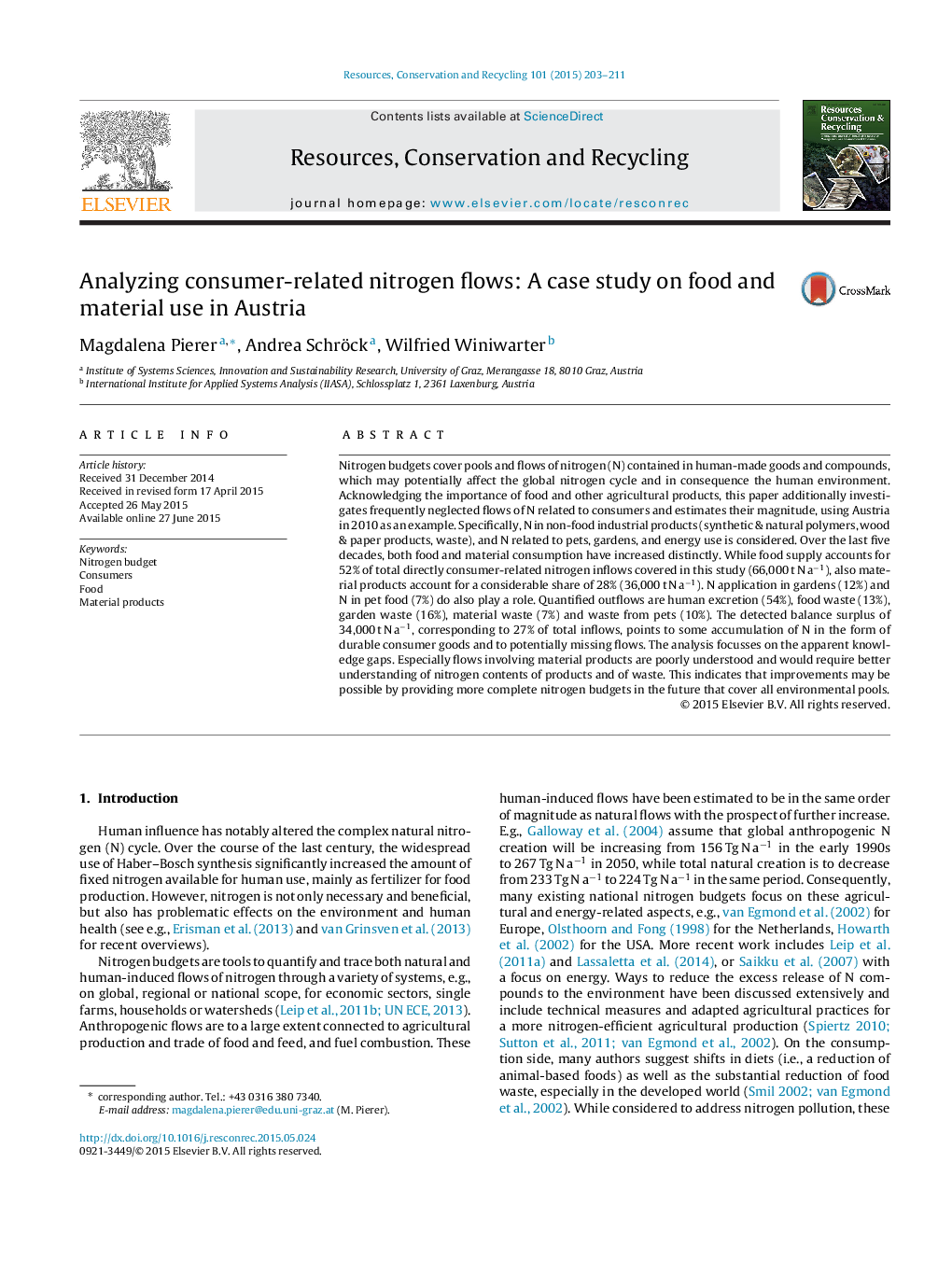| Article ID | Journal | Published Year | Pages | File Type |
|---|---|---|---|---|
| 7495153 | Resources, Conservation and Recycling | 2015 | 9 Pages |
Abstract
Nitrogen budgets cover pools and flows of nitrogen (N) contained in human-made goods and compounds, which may potentially affect the global nitrogen cycle and in consequence the human environment. Acknowledging the importance of food and other agricultural products, this paper additionally investigates frequently neglected flows of N related to consumers and estimates their magnitude, using Austria in 2010 as an example. Specifically, N in non-food industrial products (synthetic & natural polymers, wood & paper products, waste), and N related to pets, gardens, and energy use is considered. Over the last five decades, both food and material consumption have increased distinctly. While food supply accounts for 52% of total directly consumer-related nitrogen inflows covered in this study (66,000 t N aâ1), also material products account for a considerable share of 28% (36,000 t N aâ1). N application in gardens (12%) and N in pet food (7%) do also play a role. Quantified outflows are human excretion (54%), food waste (13%), garden waste (16%), material waste (7%) and waste from pets (10%). The detected balance surplus of 34,000 t N aâ1, corresponding to 27% of total inflows, points to some accumulation of N in the form of durable consumer goods and to potentially missing flows. The analysis focusses on the apparent knowledge gaps. Especially flows involving material products are poorly understood and would require better understanding of nitrogen contents of products and of waste. This indicates that improvements may be possible by providing more complete nitrogen budgets in the future that cover all environmental pools.
Keywords
Related Topics
Physical Sciences and Engineering
Energy
Renewable Energy, Sustainability and the Environment
Authors
Magdalena Pierer, Andrea Schröck, Wilfried Winiwarter,
